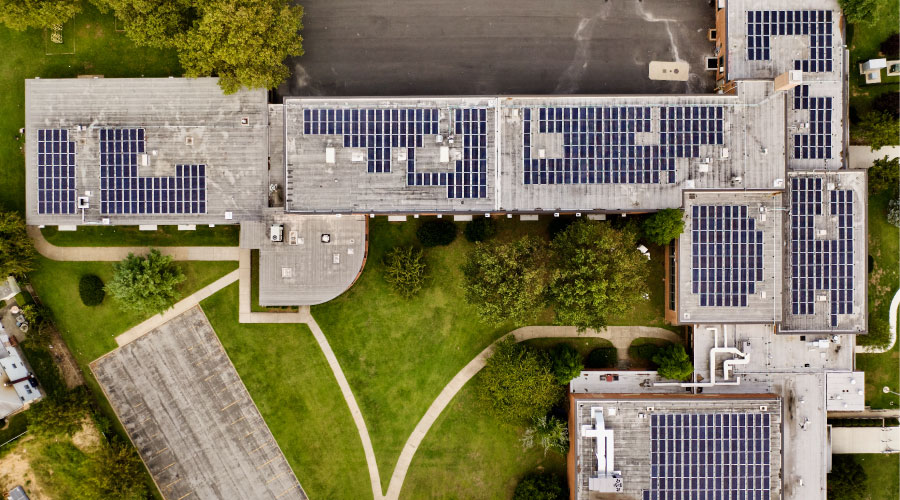Cool Roofs Can Provide Big Savings in Conjunction With Other Systems
So the key to maximizing your deduction is realizing that while cool roofs have standalone benefits as part of the building envelope deduction, that benefit gets multiplied when added to energy savings in HVAC and lighting as part of a larger effort. One of the best ways to save energy in HVAC operations is by being able to adjust the size of the equipment to what is truly needed for the space, which is made easier when a cool roof is lessening the heat load on the building.
"The cool roof should enable the property owner to right-size or put in a more efficient HVAC system than he would've done previously," says Goulding. "If one puts in a cool roof, then puts in very energy-efficient HVAC, you can now get that $1.20 (per square foot) by merely getting a 25 percent energy cost reduction compared to ASHRAE 2001. The tax law works holistically, and that's the way to use a cool roof."
In non-conditioned space, it's a little trickier, because the HVAC component isn't there. But, cool roofs can still team up with more efficient lighting to create a big deduction if the lighting creates enough energy savings to trigger the maximum deduction.
Goulding points out one other benefit to cool roofs on non-conditioned space such as warehouses.
"We have a lot of warehouses in this country that are not conditioned, and it gets pretty tough for the workers in the warm months," he says. "In a non-conditioned space, there's an argument for the cool roof just to assist in worker comfort."
Incentives and Requirements
The bottom line benefits of cool roofs — from utility incentives to reductions in energy costs — can vary widely from place to place.
As an example, California has 16 different climate zones. So, logic dictates there would be variance in the requirements and incentives based on the differences between those zones. Where it can get confusing is when facilities in the same climate zone have different options due to different programs offered by utilities. A facility manager who gets power from the Los Angeles Department of Water and Power will find the utility no longer offers cool roof rebates for commercial buildings, because cool roofs are considered to be "standard industry practice." But in neighboring Burbank, City of Burbank Water and Power does offer cool roof rebates.
The first step is figuring out what local incentives are available to you. In many cases, local government-backed programs are no longer in effect. So locally, a utility rebate will probably be your best bet, if one is offered.
"Most of the incentives that have been available had statutory dollar limitations associated with them or were tied to specific taxes," Hoff says. "It is very difficult today to both find the incentive available, and then find a pool of money backing the incentive."
Related Topics:














